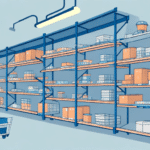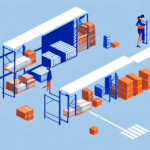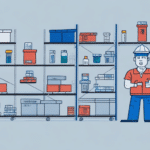What is Unit Fill Rate and Its Importance for E-Commerce
Unit fill rate is a critical performance metric in e-commerce that measures the percentage of customer orders fulfilled accurately and completely. Specifically, it calculates the number of items shipped to customers divided by the number of items ordered, expressed as a percentage. For instance, if a customer orders ten items and receives nine, the unit fill rate is 90%.
Maintaining a high unit fill rate is essential for several reasons:
- Customer Satisfaction: Accurate and timely deliveries foster trust and loyalty among customers.
- Profitability: Reduced errors lead to lower costs associated with returns, reshipping, and customer service.
- Inventory Management: Accurate fulfillment ensures optimal inventory levels, preventing overselling or stockouts.
Impact of Unit Fill Rate on Customer Satisfaction
A high unit fill rate directly correlates with increased customer satisfaction. Customers expect to receive the exact items they ordered, and deviations can lead to frustration and loss of trust. According to a study by Gartner, 89% of consumers are less likely to shop with a retailer after experiencing order inaccuracies.
Additionally, a high unit fill rate contributes to positive reviews and repeat business, which are vital for long-term success in e-commerce.
How to Calculate Unit Fill Rate
Calculating unit fill rate is straightforward. Follow these steps:
- Determine Total Units Ordered: Count the number of items ordered by customers within a specific period.
- Determine Total Units Shipped: Count the number of items successfully shipped to customers in the same period.
- Calculate the Rate: Divide the total units shipped by the total units ordered and multiply by 100 to obtain a percentage.
Formula: (Total Units Shipped / Total Units Ordered) × 100 = Unit Fill Rate%
For example, if 1,000 units are ordered and 980 are shipped, the unit fill rate is 98%.
Key Metrics Related to Unit Fill Rate
While unit fill rate is a primary indicator of fulfillment accuracy, other related metrics provide deeper insights:
- Order Fill Rate: Measures the percentage of complete orders shipped without any errors.
- Perfect Order Rate: Evaluates the percentage of orders delivered without any issues, including accuracy, condition, and timeliness.
- Back Order Rate: Indicates the percentage of orders that cannot be fulfilled at the time of purchase and are delayed.
Monitoring these metrics alongside unit fill rate helps businesses identify specific areas for improvement in their fulfillment processes.
Strategies to Improve Unit Fill Rate
Enhancing unit fill rate involves optimizing various aspects of the e-commerce operation:
- Optimize Inventory Management: Implement robust inventory management systems to track stock levels accurately and predict demand trends.
- Streamline Order Fulfillment: Utilize automation tools to reduce manual errors and speed up the fulfillment process.
- Enhance Supplier Collaboration: Maintain strong relationships with suppliers to ensure timely and accurate delivery of products.
- Implement Quality Control Measures: Regularly inspect products before shipping to minimize the risk of sending incorrect or damaged items.
By adopting these strategies, e-commerce businesses can significantly increase their unit fill rate, leading to higher customer satisfaction and better financial performance.
The Role of Inventory Management in Unit Fill Rate
Effective inventory management is pivotal in achieving an optimal unit fill rate. It ensures that the right products are available at the right times, reducing the likelihood of stockouts and overstocking. Advanced inventory management systems provide real-time data on stock levels, sales trends, and demand forecasts, enabling businesses to make informed decisions.
According to a report by Forrester, companies that implement sophisticated inventory management solutions see a 15% improvement in order fulfillment accuracy.
Moreover, integrating inventory management with other systems like order processing and supply chain management creates a seamless workflow, further enhancing the unit fill rate.
Case Studies: E-Commerce Companies Excelling in Unit Fill Rate
Several e-commerce giants exemplify excellence in maintaining high unit fill rates:
Amazon
Amazon boasts a unit fill rate of approximately 99%. This high rate is achieved through advanced automation, efficient warehouse management, and a robust supply chain network. Their investment in technology, such as robotics and AI-driven inventory systems, plays a significant role in their fulfillment accuracy.
Chewy
Chewy, an online pet supplies retailer, maintains a unit fill rate of around 98%. Their success is attributed to meticulous inventory control, personalized customer service, and reliable supplier partnerships. Chewy's focus on operational excellence ensures that customer orders are fulfilled accurately and promptly.
Zappos
Zappos, known for its exceptional customer service, achieves a unit fill rate of 97%. By emphasizing quality control and offering flexible return policies, Zappos ensures that customers receive exactly what they ordered, enhancing overall satisfaction and loyalty.
Leveraging Technology to Enhance Unit Fill Rate
Technology plays a crucial role in improving unit fill rates. Key technological solutions include:
- Automation Tools: Automate repetitive tasks in order processing and fulfillment to reduce human error.
- Integrated Systems: Connect inventory management, order processing, and shipping systems for seamless data flow and real-time updates.
- Data Analytics: Utilize analytics to monitor performance, identify trends, and make data-driven decisions to optimize fulfillment processes.
Implementing these technologies can lead to significant improvements in order accuracy and fulfillment speed, directly impacting unit fill rate positively.
Unit Fill Rate and Profit Margins
The unit fill rate has a direct impact on an e-commerce business's profit margins. A higher unit fill rate means fewer errors, reducing costs associated with returns, reshipping, and customer service. According to a study by McKinsey & Company, improving order accuracy by 1% can boost profitability by up to 10%.
Moreover, maintaining a high unit fill rate enhances customer loyalty, leading to repeat purchases and sustained revenue growth.
Best Practices for Maintaining High Unit Fill Rate
To sustain a high unit fill rate, consider the following best practices:
- Staff Training: Ensure that employees involved in order fulfillment are well-trained and understand the importance of accuracy.
- Set S.M.A.R.T Goals: Define Specific, Measurable, Achievable, Relevant, and Time-bound goals to track and improve unit fill rates.
- Clear Communication with Customers: Provide transparent information about order processing and promptly communicate any delays or issues.
- Regular Audits and Reviews: Periodically assess fulfillment processes to identify and rectify inefficiencies.
Conclusion: The Critical Role of Unit Fill Rate in E-Commerce Success
Unit fill rate is a fundamental metric that significantly influences customer satisfaction, profitability, and overall e-commerce success. By understanding, measuring, and optimizing unit fill rate, businesses can enhance their fulfillment accuracy, foster customer loyalty, and drive sustained growth. Implementing effective inventory management, leveraging technology, and adhering to best practices are essential steps towards achieving and maintaining a high unit fill rate.




















